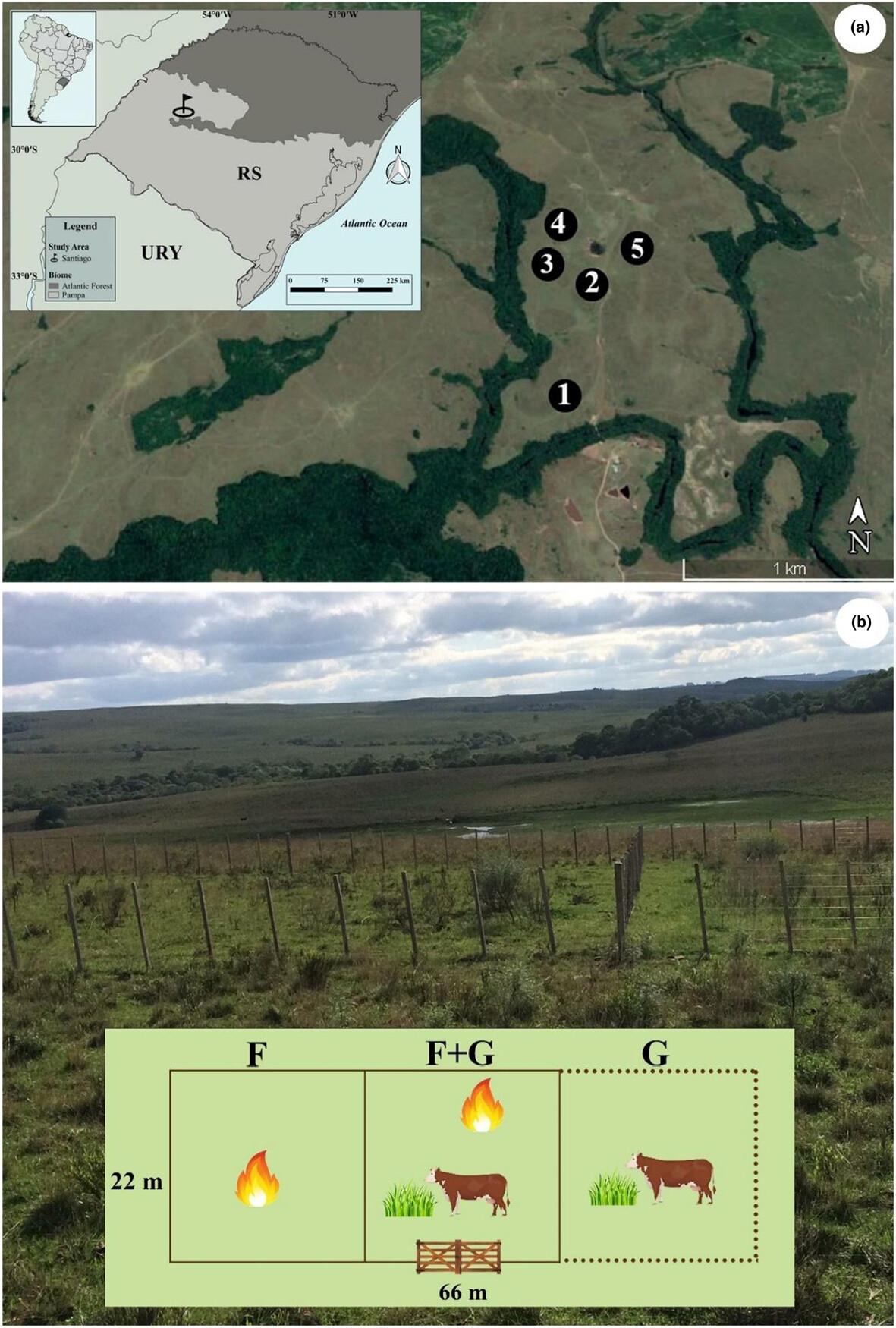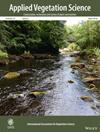Interactive effects of fire and grazing on vegetation structure and plant species composition in subtropical grasslands
Abstract
Question
Fire and grazing, and their interaction, are the main drivers of vegetation structure and plant species composition in many grasslands globally. However, for subtropical grasslands in southern Brazil, the interactive effects of fire and grazing on plant community composition characteristics remain relatively understudied, even though this ecosystem is recognized as fire-dependent with critical importance for livestock grazing.
Location
Subtropical grassland in southern Brazil (Santiago, Rio Grande do Sul state).
Methods
Beginning in 2017, we established an experiment with three treatments: fire only (F), grazing only (G), and fire and grazing (F + G). Grazing was continuous with ca 1.1 animal unit per hectare annually and prescribed fires were applied annually in winter. We assessed vegetation structure (via percentage of bare soil, height of canopy, and available forage) and plant species composition during spring (November) and summer (March) of 2017, 2018, 2019 and 2020 (only summer season).
Results
Differences in vegetation structure were found among treatments, wherein bare soil, height of canopy and available forage were higher in F, and lower but similar in F + G and G. Plant species richness was equal among treatments, but cover of C3 grasses was higher in F than in other treatments, and shrub cover was lower in F and F + G in comparison to G. In F + G treatment, available biomass for subsequent burning was limited, resulting in lower amounts of fuel, reduced fire spread, and ultimately less total area burned in the subsequent years.
Conclusions
Our findings suggest that interaction of fire and grazing can be a useful vegetation management tool for conserving native plant species, increasing availability of more desirable forage plants, and decreasing shrubs (including toxic Senecio species which contain hepatotoxic pyrrolizidine alkaloids). The singular and interactive effects of fire and grazing suggest the subhumid Río de la Plata grasslands are a fire-adapted ecosystem with variable plant functional trait responses facilitating differential dominance. There is a need for future work to address spatio-temporal variability and vegetation heterogeneity.


 求助内容:
求助内容: 应助结果提醒方式:
应助结果提醒方式:


